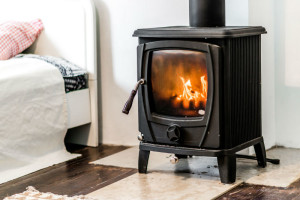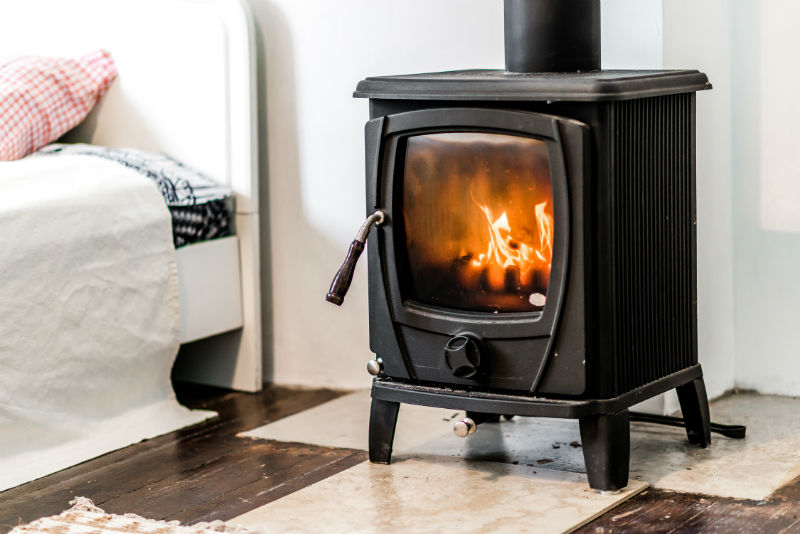Selecting a fireplace comes with a host of options. Even once you decide on your fuel source, you’ll have to decide how you want your fireplace to be vented. There are three primary options: B-vent, direct vent and ventless.
B vent
 B vent fireplace, also referred to as natural draft fireplaces, are the choice you likely think of when you think of a chimney. The fireplace pulls in air from the room for combustion, and the smoke from the fireplace rises upward through a chimney. B vent systems can be more expensive to install, and they restrict where in the home the fireplace can be installed. They also don’t create as efficient of a fire as other heating options.
B vent fireplace, also referred to as natural draft fireplaces, are the choice you likely think of when you think of a chimney. The fireplace pulls in air from the room for combustion, and the smoke from the fireplace rises upward through a chimney. B vent systems can be more expensive to install, and they restrict where in the home the fireplace can be installed. They also don’t create as efficient of a fire as other heating options.
Direct vent
Direct-vent fireplaces use a two-pronged system to fuel and exhaust your fire. One pipe pulls cool air from the outside to fuel the fire, and another pipe serves as an exhaust for the fireplace. Glass doors seal the fireplace off entirely from the home, so there is no air exchange between the fireplace and the room it’s placed in. Fans generally pump heat from the fire into the room.
Direct-vent fireplaces are a more efficient option than B vent fireplaces, returning more of the fire’s heat to your home. They also offer more flexible options in placement since they don’t require a large chimney system. Generally, direct-vent fireplaces can be placed on any exterior wall of a home, and the vents run vertically out of the home.
Ventless
Ventless gas fireplaces, as the names suggests, have no exhaust systems whatsoever. Ventless fireplaces or stoves draw air from the room to fuel their fires, and they burn so efficiently that they don’t require an exhaust system. Because there’s no external exhaust, the majority of the fire’s heat is returned to your home.
Perhaps the greatest advantages to ventless fireplaces or stoves are flexibility and cost of installation. Because they don’t require a chimney or exhaust system to be installed with them, the installation costs for a ventless fireplace generally are lower. Without the need for an exhaust, ventless fireplaces can be installed in nearly any room of your home and in nearly an location. You don’t need an external wall or an area that can accommodate a chimney.
If you’re trying to decide on a fireplace or stove for your home, call Tri County Hearth & Patio Center. We’re experts in fireplaces and stoves, and we offer a variety of models to suit your needs. We can talk to you about all of your options. We will help you weigh the pros and cons of different fireplace fuels, and help you determine which venting option is right for your new fireplace or stove.
